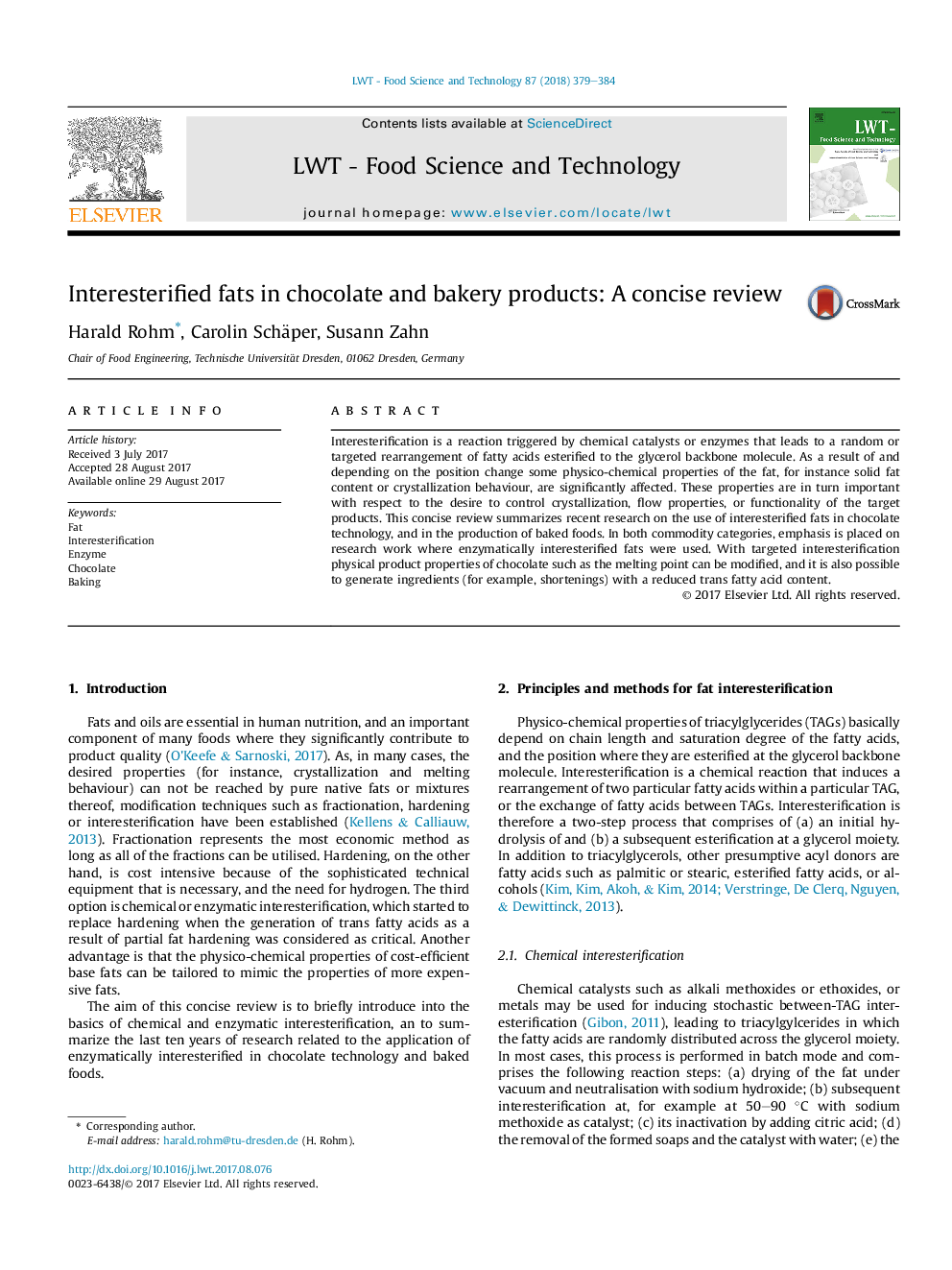| کد مقاله | کد نشریه | سال انتشار | مقاله انگلیسی | نسخه تمام متن |
|---|---|---|---|---|
| 5768588 | 1628512 | 2018 | 6 صفحه PDF | دانلود رایگان |
- Enzymatic interesterification allows a directed position change of fatty acids.
- The use of interesterified fats in chocolate and baked foods production is reviewed.
- Products with modified physical or nutritional properties can be achieved.
Interesterification is a reaction triggered by chemical catalysts or enzymes that leads to a random or targeted rearrangement of fatty acids esterified to the glycerol backbone molecule. As a result of and depending on the position change some physico-chemical properties of the fat, for instance solid fat content or crystallization behaviour, are significantly affected. These properties are in turn important with respect to the desire to control crystallization, flow properties, or functionality of the target products. This concise review summarizes recent research on the use of interesterified fats in chocolate technology, and in the production of baked foods. In both commodity categories, emphasis is placed on research work where enzymatically interesterified fats were used. With targeted interesterification physical product properties of chocolate such as the melting point can be modified, and it is also possible to generate ingredients (for example, shortenings) with a reduced trans fatty acid content.
Journal: LWT - Food Science and Technology - Volume 87, January 2018, Pages 379-384
